
fashion has always been used to distinguish and mark someone's sexual identity. the politics of gender definition has made fashion a tool that defines the wearer's sexuality and at the same time, place the subject within a social hierarchy. traditional sartorial rules have always segregated certain visual aspects that intentionally divided the costumes for men and women. however there has been characters throughout history like joan of arc who bended and manipulated the idea behind male/female costume as a means simply not to provoke, but as a form of powerful symbolism. something that lent itself beyond the idea of dressing, but as a potent metaphor. but it wasn't until just over a hundred years ago that jackets and trousers strictly belonged to the uniform of the male species while women were confined to dresses, skirts, and corsets. this extended beyond garments into the realm of physical display. haircuts, mannerisms, and even professions were given gender. the early women's liberation movement tackled the daunting task of what made men innately male, and women innately female. realizing that clothes are nothing but an extension of how we perceived our sexes and how we display our gender to the public, one woman dared to challenge the general perception of what genderfies clothes. she would in the process revolutionize fashion and by doing so, ushered in the modern fashion movement. her name was coco chanel and with her lead the exploration of androgyny became one of the most modern themes in fashion influencing everyone from yves saint laurent to rei kawakubo.



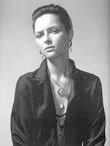

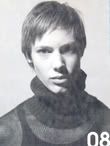
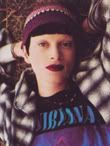
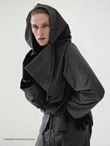
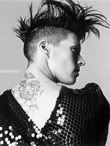
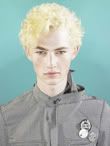
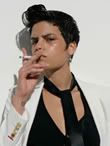
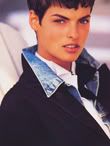
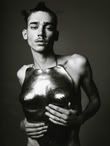
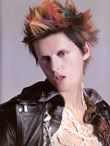
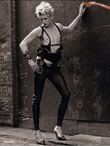
chanel was the one who initially popularized a menswear hybrid into the female fashion vocabulary and eventually influencing some of the most powerful image makers of her day. hollywood icon marlene dietrich who in her 1930 film "morocco" famously wore a men's tuxedo suit and added fuel to the flame with the first female to female kiss on film. during the twenties and thirties, there was a rampant sexual experimentation that was in vogue within the artistic and intellectual circles in europe and it was in this environment that nurtured the androgyne idea. before the exploration of sexual ideas had a chance to reach beyond the underground, the second world war abruptly placed a barrier on genders once again. sending the men to the battle field and making it a woman's duty to contribute to the war effort performing jobs that were held by the now absent men without sacrificing any of their obvious femininity. and after the war when traditional values that was almost shattered became paramount once again, so too did the traditional role of man and woman. although some women continued to be active in the work force, many opted to stay home and raise a family. it was in this age of almost suffocating propriety that the children born during this time would eventually become the most influential generation of the century.
if chanel was the harbinger for change during the beginning of the twentieth century, yves saint laurent was the heir apparent.
the one factor that narrowed the divide between male and female clothing was the emergence of a valid youth culture. in america, denim, the most democratic fabric of all became a uniform for the young. suddenly girls were wearing jeans as often as they were wearing their poodle skirts and the first real influence of sub-cultures started to gain prominence. in a short decade the free love and revolutionary idea of the hippie movement became one of the most influential voice in the world where sexual experimentation was encouraged and practiced. it was in this new free thinking environment where saint laurent will find inspiration for his ideas and by doing so become one of the most influential designers the world has ever seen. and if his profound influence could be crystalized into one thing it would be his iconic "le smoking" which he unveiled in 1966. and with it came a new take on androgyny.
helmut newton's notoriously famous 1975 picture of a model wearing one of saint laurent's "le smoking" beside another nude model is perhaps one of the most defining image of androgyny to date. the searing sexuality of the image with all its tension and newton's trademark fetishism injected a more subversive take on sexuality. a subversion that has become a predominant theme in modern fashion. where sexuality is never out in the open, but walking the extremely thin line between blatant and subverted.
during the eighties, in the age of power dressing, two designers proposed a new take on androgyny. the first was giorgio armani, the italian designer who gained popularity after dressing richard geere in his film "american gigolo" whose easy, luxurious style found favor amongst those who could not identify with the larger than life designs of popular designers like claude montana or thiery mugler. in armani's hand, consumers found a more feminine suit without the hyper exaggerations found in montana or mugler's designs. armani had a more quiet confidence. using menswear inspired fabrics and pieces and adapting them into a softer more feminine line borrowing heavily from the flexibility of american sports wear.
the second designer to radically alter the idea of androgyny is the japanese designer rei kawakubo, whose label comme des garcons, literally translated to "like the boys", betrayed the first clue on what the label is all about. kawakubo's interest in re-interpreting western archetypes of clothing has always been the starting point of her collections. and since most western archetypes are derived from the male wardrobe, there is always that sense of androgyny in her design. but in her hands that androgyny is slashed, deconstructed, ripped apart and then reconstructed again into something extremely new, yet uncomfortably familiar.
as the eighties moved into the nineties the androgyne idea coincidentally fit perfectly with the minimalist movement that was rapidly gaining momentum. with its simplistic line and unadorned aesthetic which was closer to traditional menswear than feminine frivolity, the act of wearing menswear inspired clothes generally lost all the taboo attached to it and a pant suit became as universally acceptable as it was a white wedding dress. since there were more women in the workforce than ever before, the professional appearance of clothes derived from menswear albeit it feminized, became the uniform of working women everywhere.
with the lines of sexuality continuously being blurred and challenged, the vogue for androgynous looking models became increasingly popular. when linda evangelista chopped of her hair during the late eighties into a boyish cut, it propelled her into the status she has enjoyed for almost two decades. and with her famous chameleon like ability to switch from searing female sexuality to a masculine androgony, that versatility has made her one of the most successful models of all time. ushering the way for a wave of androgynous looking models of the nineties like kirsten mcmenamy, tasha tilberg, and stella tenant. models who represented the more "realistic" philosphy of the nineties.
with the new millenium and a collective feeling to progress into a more liberal society that more and more scrutinized old values, old anathemas are being challenged and questioned by a more informed younger generation. homosexuality was beginning to be more represented in the media, and even in other parts of the world same-sex marriages were legalized, and long held taboos on sexuality were starting to collapse. and with androgyny one of the most prevalent theme of hedi slimane, the man who shaped the aesthetic of the first decade of the the new century. the idea of blurred genders, although still able to provoke harsh reactions against conservative minds, is able to in this new liberal atmosphere, thin out the line our past made that divided men and women. and with america finally yearning for change and proved that willingness with the triumph of the past election, its pretty difficult not be anything but optimistic.
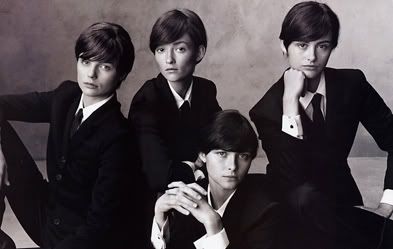

No comments:
Post a Comment